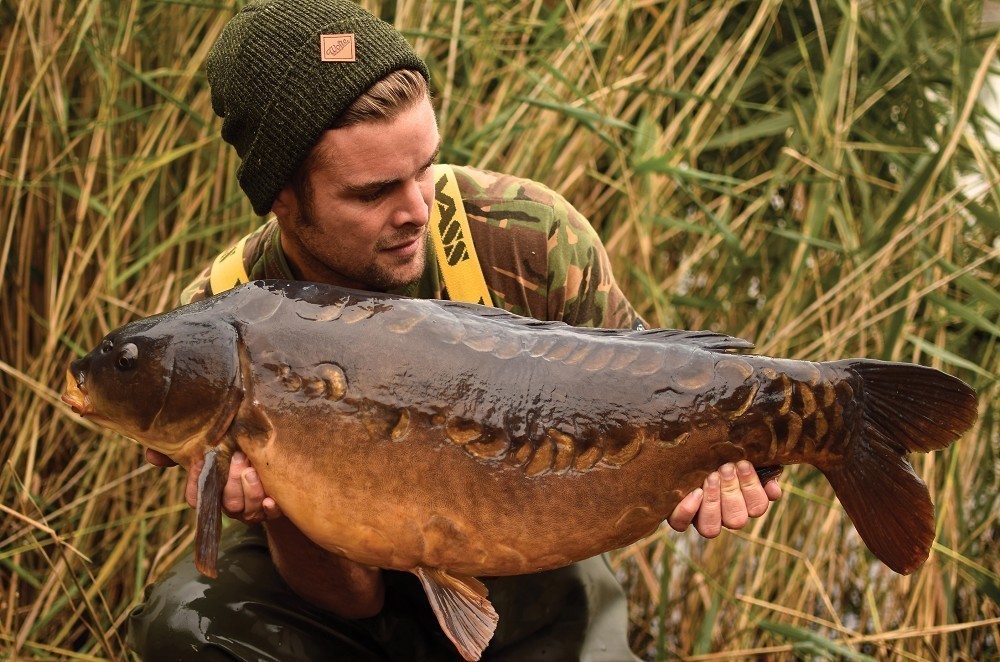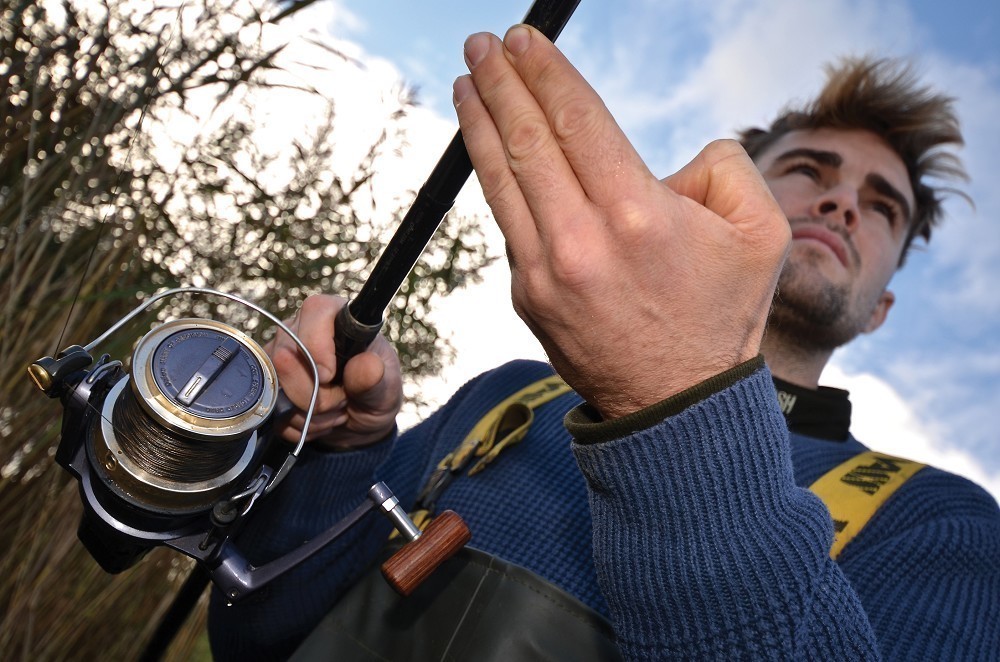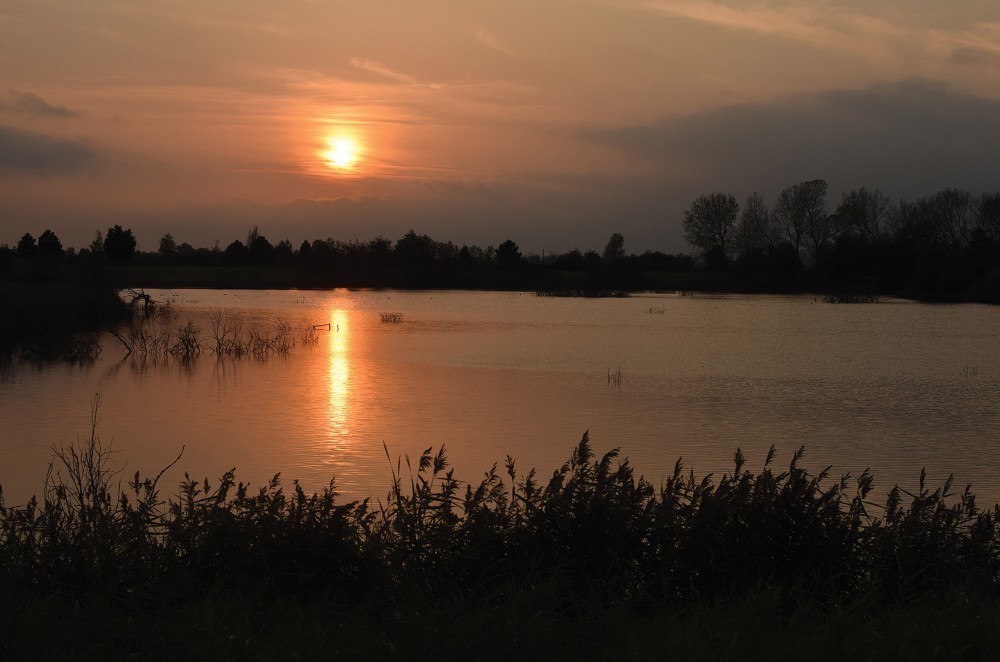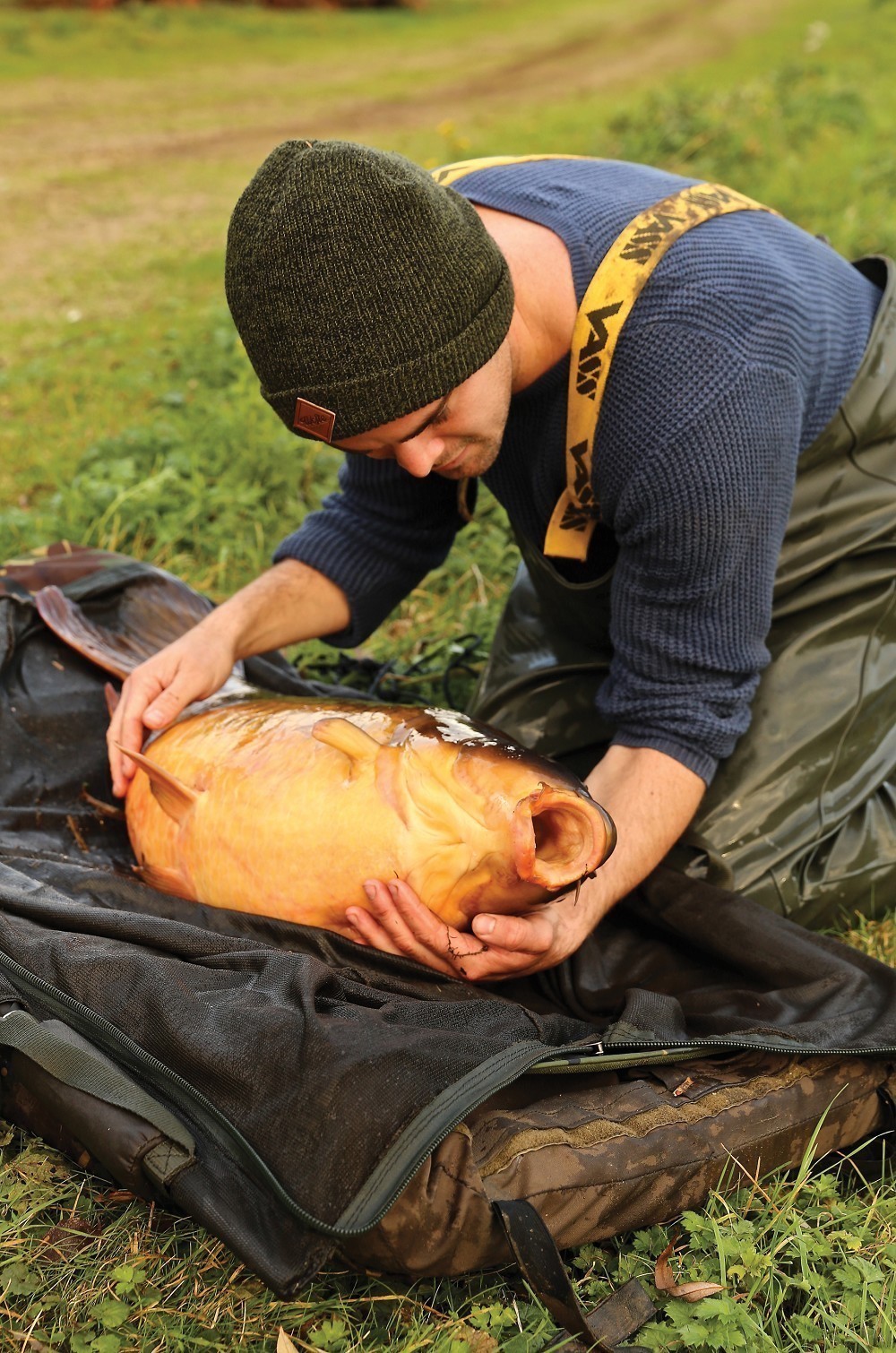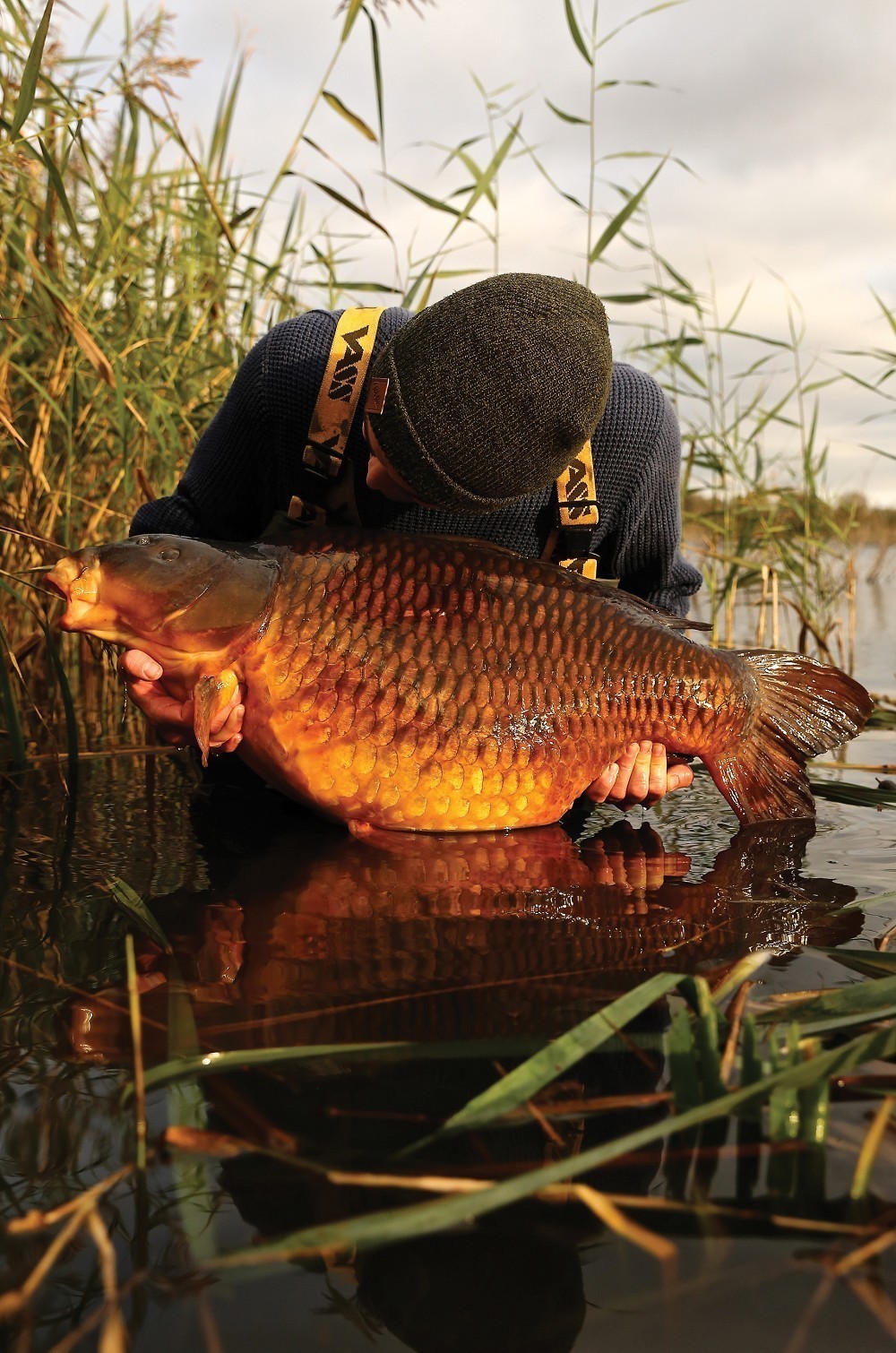Why you should try braided main lines
James Armstrong reveals his conversion over to braided main lines which give him total feeling and control over the way he angles.
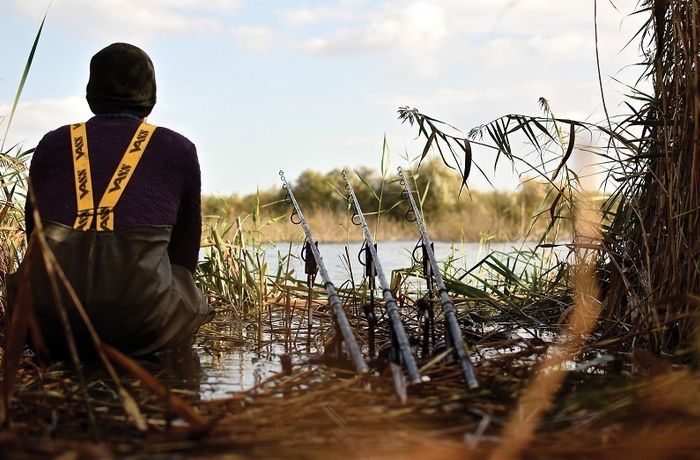
Out the corner of my eye while sitting by the waterside with a cup of piping hot cup of coffee in my hand, I see flash of gold break the water’s surface. I glance round and my eyes follow the trail of waves round to the left which are rocking into the bank. With my eyes fixated on this zone, another huge, bronze back rolls in the ruffled, windy surface which is surging from right to left. It’s a mild southwesterly and in typical big pit fashion the carp are following in suit. Out in front is a minefield of sunken islands and snags which puts pay to casting to the showing fish as a snag is dividing my swim to that zone making it nigh-on impossible to fish, even more so with the crosswind. I gulp down the coffee burning the top of my mouth as I do so, yep, you know it, the moment it goes all fuzzy when eating, but needs must. I have to move.
With little gear to transport, I soon have my Bergen rucksack, bed, mat, bait, and three rods ready for the short walk 100yd or so to the next swim. I crouch behind the marginal reeds while getting a few bits ready and notice that the showing has slowed just in time to get the rigs primed and positioned. The swim itself gives me an expanse of open water, but it’s lovely and intimate. It’s fully lined with reeds and the rods will simply poke out the middle. It’s like being at home with the bitterns, a little carp fishing nest.
As I scan the area in front I can’t help but notice the large weed rafts. It’s a bit of a football pitch of weed, but there are clear spots beneath the surface, somewhere. I know this as I’ve explored the lake several times with a rowing boat. However, this is not an occasion for one of those and I’m certainly not one for an echo sounder or GPS to mark my spots electronically – I don’t do computer games.
I want to make minimal disturbance, so simply loop on a 2oz swivel pear lead (for feature finding) and flick it out around 40yd near to where they were showing. It looks slightly clearer through the naked eye anyway. The line purs from the spool, as you will notice with braid, and I trap the lead before it hits the surface, sweep the rod back slightly and feel it submerge through the weedy depths. A few seconds and it touches down sending a gentle sensation through the rod. It’s in weed, it was just too much of a soft drop, not ideal for the way I want to present a rig but at least I’m certain that it’s nestled in the green stuff, unlike when using monofilament which can definitely cloud your judgement!
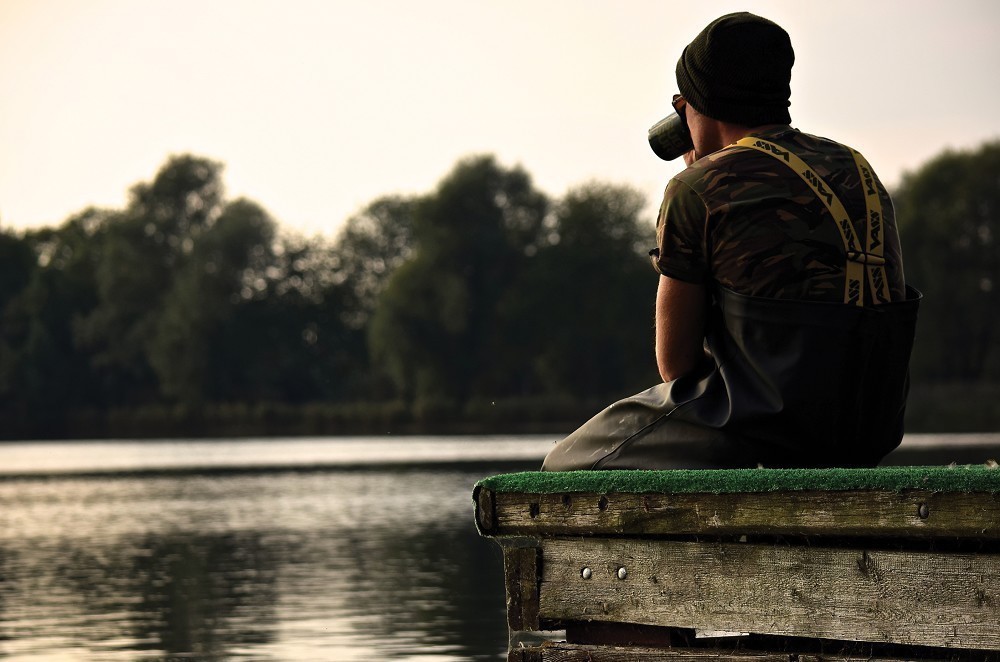 Out the corner of my eye while sitting by the waterside with a cup of piping hot cup of coffee in my hand, I see flash of gold break the water’s surface
Out the corner of my eye while sitting by the waterside with a cup of piping hot cup of coffee in my hand, I see flash of gold break the water’s surfaceHolding the rod high up in the air I flick it on tight line, feel the lead pass through some strands of weed as it shudders the tip and then crack, it’s on a clear spot. I retrieve the lead an inch or so by holding the rod sideways and the telltale tap of gravel can be felt reassuringly through the rod. It’s clean, mega clean in fact, and soon moves into a glass-like sensation revealing beautifully-clean silt. I can feel the odd flint of gravel too. I love spots like this and have received fantastic success on such areas in the past. They’re not polished off at all, just the start of a spot. I’ve witnessed this on many waters. Quite often, a polished off, gravelly area with large lumps of stone appeared too obvious. Through polaroids, such areas actually glowed in the sun. For me, these were finished!
It was always the smaller, cleaner areas of silt with the odd flint that revealed that it had been fed on and was probably the beginning of a new dance floor (analogy of a feeding area). I have a real air of confidence as I pop the braid under the line clip, in fact I even smile to myself. No marker float, just a little bare lead on my normal rod. I wrap some electrical tape around the line to permanently mark it and then line the spot up with a horizon marker to ensure optimum accuracy. This time it’s a rather large Sycamore tree. Some angler use marker poles, but I still do it the old-fashioned way. That said, I must start doing this, it makes total sense rather than walking my lines up the bank.
I’ve made very little disturbance but want to introduce a few mouthfuls of bait, just to get them grazing and I know that they love a mixture. I loop off the lead, knowing that it’s all marked up and replace with a Spomb Midi. These little gadgets are ideal for using on your main rods. Not too heavy, but just large enough to hold pockets of free bait. I decide to just pop three loads over the area; just particles, whole boilies, chops and corn to give the zone a bit of scent and a small amount of food value. I’ve also added a doseage of Hot Fish Oil for even more attraction. I keep it smooth and quiet. The Spomb touches the clip before pattering down onto the surface. The weed surrounding the spot will give the carp sanctuary if they feel a little on edge from the Spomb. However, at times it acts as a dinner bell. Remember, each cast is delivered with optimum accuracy because there is no stretch in the braid. You know that baits will at the very least be within a few feet of your rig!
Three casts and a tasty banquet is accurately deposited on the spot. The Spomb is replaced with my leadcore and rig, again loop-to-loop style. I squeeze a nugget of foam around my slow-sinking hookbait, flick it out towards the Sycamore tree marker and it soon hits the clip quietly. I feel it down on a tight line, donk, it’s on the dance floor. I’m feeling confident and content that everything is perfect. I fish the lines semi slack and now it’s up to the carp. I quite often fish them semi slack or even tight, as I want indication to be at its optimum and also don’t want to give much free line due to the amount of snags present. The element of slack will allow the last 10yd or so to sink into the surrounding weed and keep everything out of harm’s way. I squeeze another rod onto a clear spot close by and I’m soon sitting back in double-quick time, angling… knowing that everything is 100% on the money. No maybes, ifs or that’ll dos… the rigs are on the spots, over bait and carp are in the area. Of course, if you knew that the fish were particularly spooky from an angler’s presence you could opt to fish little bags, scatter baits using a stick or even fish singles. That comes down to watercraft and learning the characteristics of the carp that inhabit your water. However, I know that a couple of sneaky Spombs won’t ruin my chances. If anything, it will boost them!
Braid over mono
With monofilament, this sort of scenario just wouldn’t be possible. There is simply no way that you know 100% what you’re fishing over due to the stretch. It completely clouds your judgement. Sure, you could use a marker rod with braid on, but then you have to gauge the correct distance on your normal rod with mono, the extra amount of stretch against the depth of water and even then you still don’t know for sure. It’s just too much faffing and commotion. By the time you’ve marked up, popped the float up and started introducing bait, the fish will have buggered off. Why not do it all on one rod?
I literally take three rods when I’m angling; no marker, no spod, just three tools to do everything. I hate bulk, it slows you down and everything seems more of a hassle. If I see a fish show I want to be on it quick as a flash, not have to pack away and carry loads of gear.
One braid unfortunately doesn’t do it all, although I have found one that’s close. Generally, a fast-sinking, tough braid, will be heavy with a high diameter. Consequently, it wouldn’t be particularly suited to distance casting. In a situation where you’re targeting carp in a small, intimate water where you want your line pinned to the deck I recommend this type of braid. The main line will still cast up to 80yd, it just won’t be as smooth as a thinner-diameter casting braid. But, it will sink like a brick out of the carp’s way and also retain the advantages of no stretch, feel, strength, bite detection, abrasion resistance etc.
A casting braid will be far thinner and suppler, almost silk-like. This type of braid will cast a long, long way and huge casters such as Terry Edmunds, Warwick, Pecky will put leads to extreme distances, some over 200yd with such braids. You would need a shockleader of course. The downside is that they’ll be of a neutral buoyancy and might even float!
In summary, I tend to use three braids all on different spools: an out-and-out casting braid (low diameter); a thick, sinking braid (high diameter); and an all-rounder (a mixture of the two). I cover all bases this way. A bit like you’d have a few different monos!
So how does it feel?
Playing fish on braid isn’t as scary as everyone makes out, it’s just very different to battling a carp on mono if that’s what you’re used to. If you’d never used mono, you wouldn’t know any different!
It is very different to mono in the fact that you probably have to be a little more careful and not bully them as much, but to be honest I’ve been in some pretty hairy situations, when tackling carp next to snags, with my rod bent double, and it has performed brilliantly. The actual pressure you put on a fish is severely dimmed underwater compared to what you think you are giving them anyway.
Many anglers say that you have to use an ultra-soft rod. This may help, but I don’t bother! I use the same 3.75lb test curve rods that I always have done and would only be concerned if I suddenly switched to tiny hooks and light, mono hooklinks in shallow water. The more fish that you play on braid the more you will get used to it.
Another benefit is when fishing weedy waters. Due to the nature of the braid, it will actually cut through weed roots more so than a smooth monofilament. This helps no end when trying to extract carp out of the heavy stuff. Not only that, you’re also in direct contact rather than playing all of that stretch out on a monofilament too.
Line concealment and sensitivity
There is no doubting that due to zero stretch, bite indication is at its most sensitive when using braid. This gives you a whole host of advantages: snag fishing, weed fishing, liners in the winter etc., etc. However, there is the disadvantage of it looking a little obvious in clear water, especially if you fish with a reasonably tight line. If you let it sink, or fish in weed, it’s not so much of a problem because it is concealed. You see, whatever braid you choose, it will fade through time. Nevertheless, I try to break up the colours once faded using the Solution pens. I only do this on the last 30yd or so on my spool. I take the different coloured pens and simply mark the braid at different stages. The best form of camouflage is to break up the line with an array of colours rather than just use one type. You only have to look at DPM army trousers, camouflaged for soldiers to blend into they’re environment – they’re not one whole colour, they’re flecked to break up the outline against bushes, trees and other forms of colour. Beneath the surface is a whole host of colours too, browns, greens, oranges, greys; all sorts. Flecking the braid with a pen really helps to conceal the line. Simply leave it to dry for a few minutes and you’re ready to go!
Bigger leads when braid fishing
I use large leads for the majority of my braid fishing, it just feels better and is also imperative when fishing with a rowing boat. When casting and hitting the clip to be precise a big lead just gives me that assurance of feeling it down onto the spot. A light lead can feel like it’s almost catapulting backwards. When boat fishing at range, it also means that I can fish with a tight braided line for optimum sensitivity and not worry about pulling it off the spot. Not only that, I’m convinced that when coupled with a sharpened hook point I have a presentation that is rather difficult to eject, far more than a light lead. Do the test on a bucket lid! Sharpen up your hook points and tie up two rigs – both on rotary rigs to leadcore. Place a 1oz lead on one rig and a 4oz lead on the other. Now place the hook point onto your index finger and begin to lift the 1oz lead. It should penetrate a little but you’ll be able to pick it up and even swing it from side to side. Do the same with the 4oz lead: it will hurt, in fact you probably won’t be able to pick it up without the point severely penetrating your skin. Imagine a carp doing this and shaking its head. The bigger lead will penetrate a hook point far quicker and more aggressively than a smaller version – fact. I went off he subject a little there, but it’s something that I’m convinced has got me more bites this year.
The session...
Before long, the day turns to night and I’m happy with the positioning of the rigs. It’s mild, really warm for the time of year. I can hear the odd noise in the distance as carp turn over in the wind and the evening passes. I know I’m on them!
At 4:30am the left-hand rod slams round and the carbon smacks into the snag ear. It’s like a knockout punch. When fishing locked up with braid, the takes are scary. I lift into a very powerful fish that strips line from the spool. A few hairy moments, well many in fact, are forthcoming and having had a tussle with an angry carp on the end and a huge marginal snag eventually I shuffle a rather large common into the net. The next few moments leave me gobsmacked and as it gets light my old mate Lewis arrives to take the photos and the rest is history.
There are many, many advantages of braid and I guess the number one factor for me is the feel through the rod. I know that I’m presenting my rig on the spots that I’m locating all along. I only need three rods for all of my angling which keeps my load light and encourages me to move more. It’s less hassle. Not only that, it keeps disturbance to a minimum. It would be very hard to go back to mono now and only when I fish waters where braid is banned shall I change back. Certainly until I find a valid reason to change anyway.





